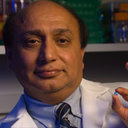Heat stress improves functional recovery and induces synthesis of 27- and 70-kDa heat shock proteins without preserving sarcoplasmic reticulum function in the ischemic rat heart.
Ключавыя словы
Рэферат
Heat stress (HS) and the subsequent expression of heat shock proteins has been shown to enhance post-ischemic functional recovery and reduce infarct size. The purpose of these experiments was to determine if HS pre-treatment preserves sarcoplasmic reticulum (SR) function, a cellular organelle that plays an important role in myocardial contractility. Anesthetized rats were heat stressed for 15 min by raising temperature to 42 degrees C. Twenty-four hours later the hearts were perfused by Langendorff's method and subjected to either 20 or 35 min of global ischemia, with a subset of hearts then being subjected to 10 or 20 min of reperfusion, respectively. SR function was assessed by oxalate-supported Ca2+ uptake rate in cell free preparations in the presence and absence of ruthenium red, a selective SR calcium release channel blocker Ca2+ uptake decreased significantly from 25.6 +/- 3.4 to 13.4 +/- 1.9 and 11.3 +/- 2.3 nmol/min/mg protein (mean +/- S.E.), following 20 and 35 min of ischemia, respectively. A similar trend was observed following reperfusion as well. No significant difference in Ca2+ uptake was observed between HS v control hearts. Similarly, in samples where the Ca2+ release channel was blocked with ruthenium red, decreased Ca2+ uptake rates were noted after both ischemia and reperfusion, with no significant differences seen between HS and non-HS hearts. There was significant improvement it developed pressure. +dP/dt and -dP/dt, with reduced creatine kinase release in HS v non-HS hearts. Western blot analysis demonstrated increased synthesis of 27- and 70-kDa heat shock proteins in HS but not in control animals. It is concluded that HS improves functional recovery and induces expression of 27- and 70-kDa heat shock proteins without preservation of SR function in the globally ischemic rat heart.


